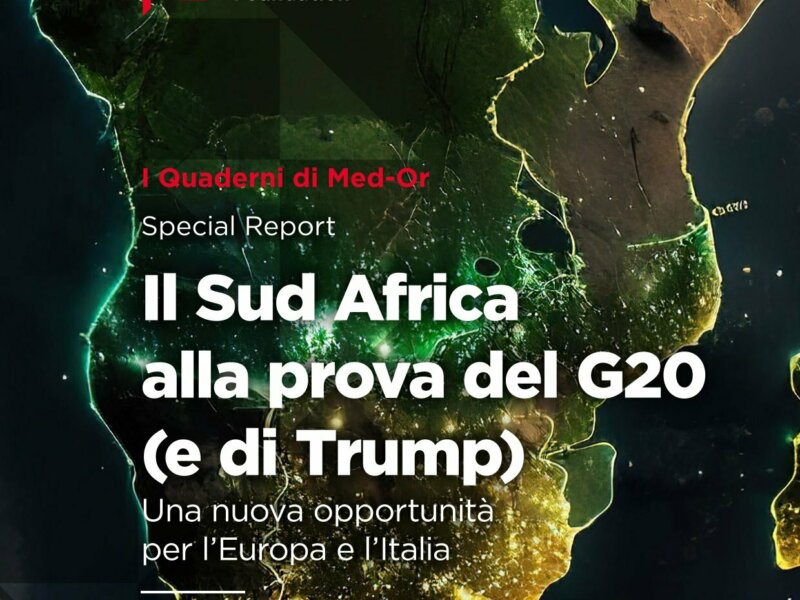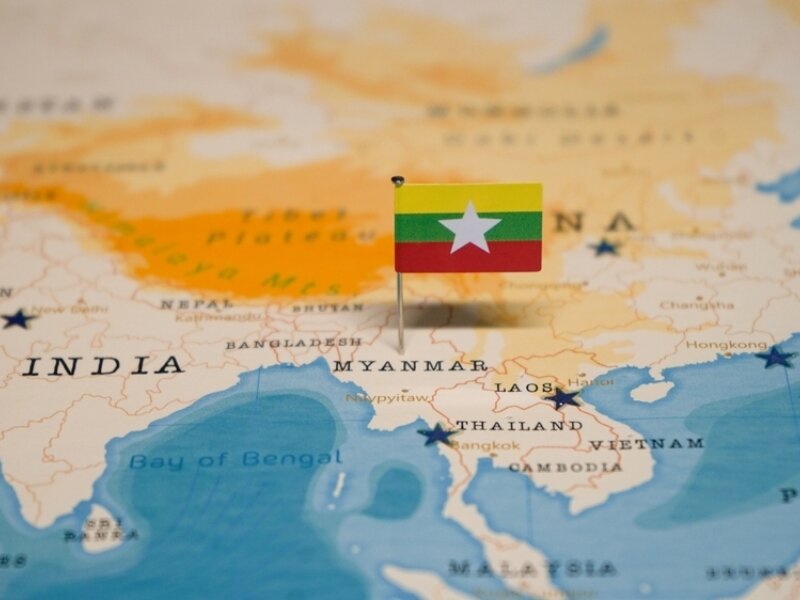The vulnerabilities of the Hormuz and Bab-el-Mandeb strategic straits
From Iran’s assertiveness to tensions between actors in the Horn of Africa, via piracy and terrorism: the role of the strategic straits in the new instability of the Gulf-Red Sea quadrant.

In the current global context, the area between the Red Sea and the Indian Ocean, in the region surrounding the Arabian Peninsula, is undoubtedly one of the three international hotspots of these first five months of 2024 – along with Ukraine and Israel. From attacks on maritime trade by the Yemeni Houthis, to latent tensions between actors in the region and other macro-phenomena of natural and anthropic origin, there are indeed a great number of significant events happening in this geographic quadrant.
There is, however, one factor that, while it is not the root cause of every single event, it certainly represents an element that can strongly influence what happens in the Gulf-Red Sea theatre: the presence of two maritime straits of great economic, political, and military importance, namely Bab-el-Mandeb and Hormuz.
Given the peculiar geography of the surrounding area, the two straits amplify any potential threat or event occurring in the immediate vicinity, allowing even actors with scarce resources – such as terrorists and pirates – to pose significant and immediate threats.
An example are the Houthis. The attacks by the terrorist group on commercial vessels transiting through the Bab-el-Mandeb Strait have caused serious damage to critical infrastructure and shipping companies operating in the Red Sea region. Similarly, another serious threat is posed by pirate groups active in the Gulf of Aden, whose assaults on vessels add further critical issues to the already fragile shipping industry. Especially as the attacks are steadily increasing according to data from the International Maritime Bureau – a specialized division of the International Chamber of Commerce (ICC). According to some recent analyses, this spike in attacks may be related to the Red Sea’s instability, given that part of the naval forces – originally present in the area to protect maritime trade from piracy – have been sent near the Yemeni coast to counter Houthi rebels. Consequently, the reduced presence of anti-piracy operations has provided pirates with the opportunity to strike a greater number of targets, facilitated precisely by the small size of the maritime context under consideration.
This situation, combined with the Yemeni group’s attacks, has prompted international shipowners to modify their trade routes, preferring those via the Cape of Good Hope, despite higher transportation costs.
However, Yemen is not the only fragile and threat-incubating context in the area. Indeed, on the other side of the Bab-el-Mandeb Strait, the countries of the Horn of Africa and in particular Somalia represent additional security uncertainties for the region.
In the area there are several elements that can cause potential instability, whose roots pertain to territorial disputes, political rivalries, and fierce competition for regional influence. These include rising tensions between Ethiopia and the coastal countries of Somalia, Eritrea, and Djibouti, the civil war in Sudan, ethnic clashes in Ethiopia’s Amara and Tigray regions, Somaliland’s secessionist aspirations from Mogadishu, as well as the chronic fragility of the Somali state.
From this already complicated context other threats of a non-state nature could originate. An example could be the African terrorist organizations that, taking advantage of the narrowness of the Strait, could emulate the activities of the Houthis. Undoubtedly prominent among these groups is Al Shabaab, active mainly in Somalia. The terrorist organization aims to counter the government in Mogadishu, Western actors in the country, and even other countries in the region that support Somalia. Although there is currently no information regarding activities of Al Shabaab, or other African terrorist groups, against ships and maritime critical infrastructure, there is a possibility that they will modify their strategy – similarly to what Yemeni actors have done – and try to extend their terrorist activities to the sea.
Shifting the focus towards the East, the Strait of Hormuz also, by its nature, is exposed to the same risks as Bab-el-Mandeb. Hormuz is probably less fragile with respect to the threat of terrorism and piracy, given the lack of a pair of highly unstable states on its two shores as are Somalia and Yemen in the Red Sea.
Yet, the Strait – crucial for the transit of ships carrying hydrocarbons – is nonetheless vulnerable to state-based tensions, in which Iran plays a major role. Indeed, the Islamic Republic, leading a proxy militia system known as the “Axis of Resistance”, seeks to extend its influence in the Gulf through a double-track strategy: on one hand, through alliances, military support, and diplomatic activities; and on the other, by increasing control, infrastructure construction, and direct military presence in the Strait.
To this end, Tehran has set up numerous bases along its coast and initiated a settlement policy on the islands of Abu Musa and Tunb – located in front of the United Arab Emirates and under dispute with the latter – to strengthen its power projection on the maritime side as well. Regarding the energy and infrastructure sector, the Islamic Republic has also proceeded with the creation of a more than 1,000-kilometer-long pipeline from the Goreh mining sites, near the Kuwaiti border, to the Jask oil terminal, outside the Strait. Inaugurated in 2021, the infrastructure makes it possible to export oil bypassing Hormuz and, thus, to ensure the continuity of oil trade even in the event of blockades or conflicts in the region.
Among the major players in the area, Saudi Arabia and the United Arab Emirates are without a doubt the two players competing with Iran for hegemony over the Gulf. Dialogues at a high political level have been underway for some time to foster détente; and a scenario so critical as one to involve full-fledged naval blockades is unlikely. However, it is also true that it remains a latent/ political, economic, and military competition between the three states, made even more unstable by the outbreak of the war between Hamas and Israel.
In conclusion, while the possibility of an open clash remains remote, the combination of the events leaves room for far worse scenarios than “just” diplomatic tensions. Considering the recent clashes between Iran and Pakistan in January, and with Israel in April, it seems indeed that the use of force is not discarded by Tehran. As we wait to see what the post-Raisi political developments will be, the Gulf region may find itself even further exposed to possible new crises and tensions than it has already been in recent months.



